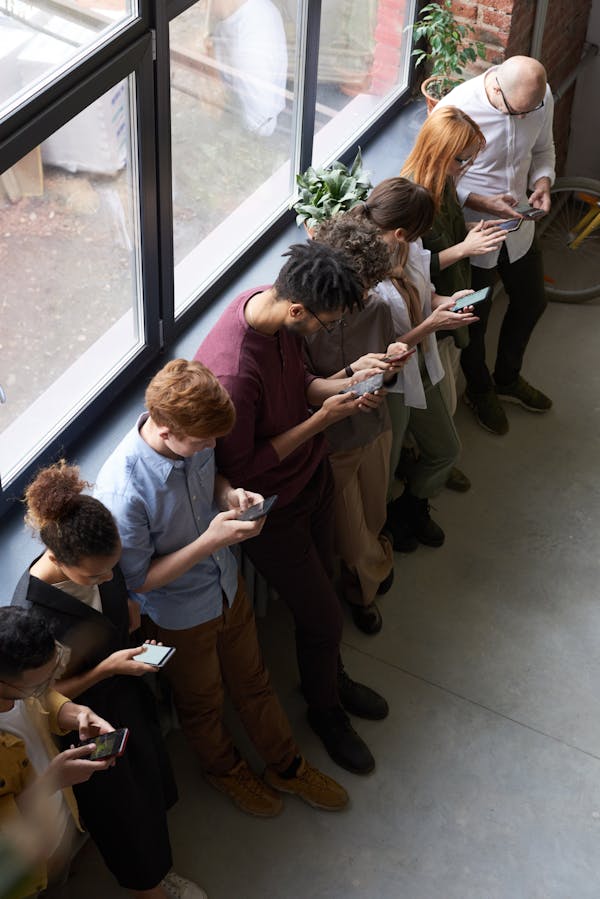Individual guideline
Seek out face-to-face interactions and use technology wisely
Technology is an important tool for facilitating social interactions, but it is important to ensure that we do not replace face-to-face connections with online ones.
- Ensure you have plenty of opportunities for face-to-face, in-person social interactions with others.
- When using technology, use tools and platforms that benefit and strengthen your relationships with others, such as those that help you organize social activities or interact meaningfully with others while you are apart.
- Limit passive use of technologies when they reduce your social contact with others, distract from social interactions, monopolize your time and attention, or negatively impact how you feel about yourself or others.



Additional considerations
In-person and virtual forms of social interaction each offer unique benefits, though they differ significantly in their impact on human connection. In-person interactions are deeply enriched by non-verbal cues such as body language, facial expressions, and physical touch—elements that are integral to human communication. Sharing physical spaces also allows for a more profound bonding experience, whether it's through activities, meals, or simply being in the same environment. These aspects make personal proximity a critical characteristic of fulfilling human social life.
However, technology can sometimes interfere with these natural interactions. The distractions presented by smartphones, tablets, and other devices can detract from the quality of face-to-face communications. Moreover, the convenience of digital interactions might lead people to opt for these easier, less emotionally demanding types of communication, such as texting or social media, over more meaningful in-person engagements. While technologies like television, telephone, and social media platforms have long been critiqued for contributing to a more isolated and less engaged society, their impact varies based on how they are used.
Despite these challenges, technology also plays a key role in facilitating connections that might otherwise be impossible. For individuals with disabilities, digital technologies can be a lifeline to the outside world, providing avenues for social interaction and community building that are not limited by physical mobility. Similarly, members of the 2SLGBTQ+ community often find support and kinship online, particularly when local in-person resources are lacking or non-inclusive.
Thus, the tension between in-person and digital interactions is less about the inherent qualities of these technologies and more about how they are utilized. When used thoughtfully and intentionally, digital tools can complement in-person interactions, helping bridge gaps in physical distance and creating opportunities for those who might otherwise be isolated. Balancing these tools with the irreplaceable benefits of face-to-face connections is key to maintaining a healthy social life in a digitally connected world.
Additional resources

The Surgeon General’s Advisory on Social Media and Youth Mental Health
Highlights concerns about the impact of social media on youth mental health, including risks like cyberbullying and anxiety. It calls for action from parents, educators, policymakers, and social media companies to create safer online environments.

Canada's technology and aging network, supporting innovations that improve the quality of life for older adults. It fosters collaboration among researchers, industry, and users to develop technologies and services that enhance seniors' wellbeing and independence.

A nonprofit organization that provides free technology training to older adults in Canada. It aims to bridge the digital divide and reduce social isolation by empowering seniors with digital literacy skills.

The CARL Digital Literacy Framework
By the Canadian Association of Research Libraries, supports digital literacy in higher education. It outlines competencies in discovering, evaluating, and using digital information, promoting ethical participation in digital environments.

Screen Time (iOS) and Digital Wellbeing (Android)
Built-in tools for smartphones that track app usage, screen time, and the frequency of phone pickups. These tools help users understand their patterns and set limits for specific apps or categories of apps.

A productivity extension for Google Chrome that helps you stay focused on work by restricting the amount of time you can spend on time-wasting websites.

Addresses workforce disengagement by connecting employees through face-to-face interactions based on shared interests and proximity. It aims to enhance employee engagement, collaboration, and satisfaction in the workplace.

A multimedia messaging app known for its disappearing messages, playful features, and real-time communication. Popular among younger users, it offers a unique approach to digital social interaction through photos, videos, Stories, and augmented reality effects.

A messaging app that offers instant messaging, voice and video calls, and media sharing. It includes features like group chats and interactive stickers, making it a versatile tool for personal and group connections.

A messaging app that enables text, voice, and video communication with end-to-end encryption. It is widely used for secure personal and group communication, offering features like group chats, status updates, and location sharing.

A digital platform designed to foster relationships between grandparents and grandchildren through Kinzey, an AI chatbot. It facilitates meaningful conversations and helps maintain strong family bonds despite physical distances and busy schedules.

